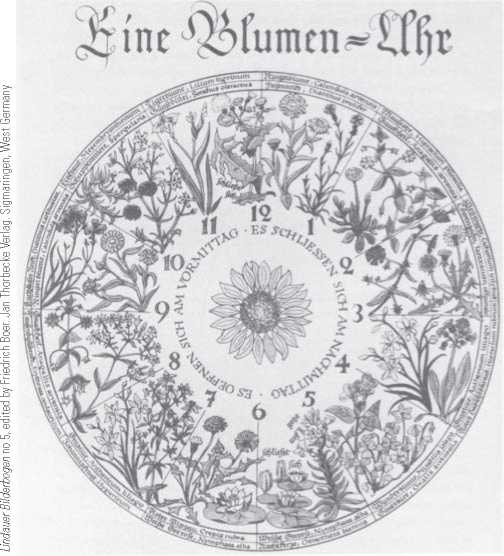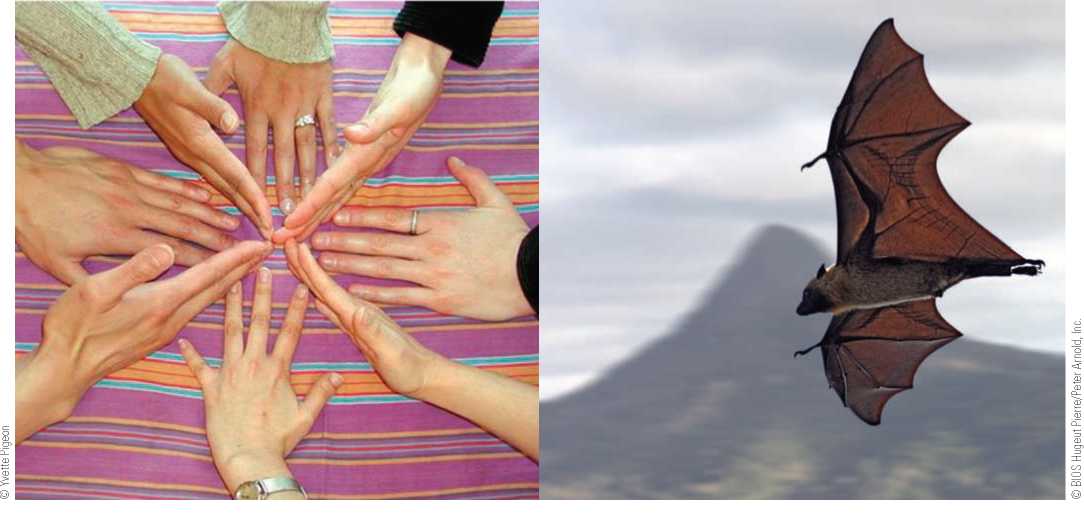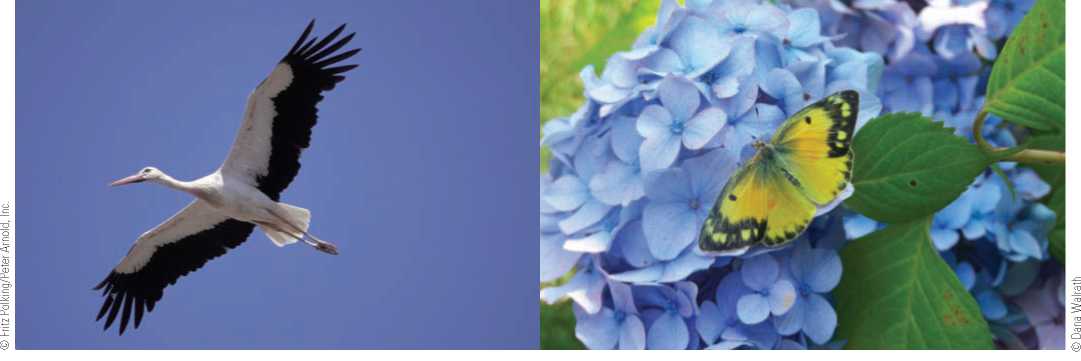Examining the development of biology and its central concept, evolution, provides an excellent example of the ways that historical and cultural processes can shape scientific thought. As the exploration of foreign lands by European seafarers, including Columbus, changed the prevailing European approach to the natural world, the discovery of new life forms challenged the previously held notion of fixed, unchanging life on earth. As well, the invention of instruments, such as the microscope to study the previously invisible interior of cells, led to new appreciation of life’s diversity.
Before this time, Europeans organized living things and inanimate objects alike into a ladder or hierarchy known as the Great Chain of Being—an approach to nature first developed by the great philosopher Aristotle in ancient Greece over 2,000 years ago. The categories were based upon visible similarities, and one member of each category was considered its “primate” (from the Latin primus), meaning the first or best of the group. For example, the primate of rocks was the diamond, and the primate of birds was the eagle, and so forth. Humans were at the very top of the ladder, just below the angels.
This classificatory system was in place until Carl von Linne (using the Latin-form name Carolus Linnaeus) developed the Systema Naturae, or system of nature, in the 18th century to classify the living things that were being brought back to Europe on seafaring vessels from all parts of the globe. Linnaeus’s compendium reflected a new understanding of life on earth and of the place of humanity among the animals.
Linnaeus noted the similarity among humans, monkeys, and apes, classifying them together as primates. Not the first or the best of the animals on earth, primates are just one of several kinds of mammal, animals having body hair or fur who suckle or nurse their young. In other

A professor of medicine and botany in Sweden, Carolus Linnaeus, who created the first comprehensive system of living things, also prepared and prescribed medicinal plants, as did other physicians of the time. He arranged for his students to join the major European voyages, such as Captain James Cook's first round-the-world voyage, so they could bring back new medicinal plants and other life forms. Through his observation of the bloom times of some plant species, Linnaeus proposed a “flower clock” that could show the time of day according to whether blossoms of particular species were open or shut.
Words, Linnaeus classified living things into a series of categories that are progressively more inclusive on the basis of internal and external visual similarities. Species, the smallest working units in biological classificatory systems, are reproductively isolated populations or groups of populations capable of interbreeding to produce fertile offspring. Species are subdivisions of a larger, more inclusive group, called a genus (plural, genera). Humans, for example, are classified in the genus Homo and species sapiens. This binomial nomenclature, or two-part naming system, mirrors the naming patterns in many European societies where individuals possess two names—one personal and the other reflecting their membership in a larger group of related individuals.
Linnaeus based his classificatory system on the following criteria:
1. Body structure: A Guernsey cow and a Holstein cow are the same species because, unlike a cow and a horse, they have identical body structure.
2. Body function: Cows and horses give birth to live young. Although they are different species, they are closer than either cows or horses are to chickens, which lay eggs and have no mammary glands.
3. Sequence of bodily growth: At the time of birth—or hatching out of the egg—young cows and chickens resemble their parents in their body plan. They are therefore more closely related to each other than either one is to the frog, whose tadpoles undergo a series of changes before attaining the basic adult form.
Modern taxonomy, or the science of classification (from the Greek for naming divisions), while retaining the structure of the Linnaean system, is based on more than body structure, function, and growth. Today, scientists also compare protein structure and genetic material to construct the relationships among living things. Such molecular comparisons can even be aimed at parasites, bacteria, and viruses, allowing scientists to classify or trace the origins of particular diseases, such as swine flu, SARS (sudden acute respiratory syndrome), or HIV (human immunodeficiency virus). An emphasis on genetics rather than morphology has led to a reworking of taxonomic designation in the human family, among others, as is described in Table 2.1. Alternative taxonomies based on genetics compared to body form in the primate order will be discussed in detail in the next chapter.
Cross-species comparisons identify anatomical features of similar function as analogies, while anatomical features that have evolved from a common ancestral feature are called homologies. For example, the hand of a human and the wing of a bat evolved from the forelimb of a common ancestor, though they have acquired different functions: The human hand and bat wing are homologous structures. During their early embryonic development, homologous structures arise in a similar fashion and pass through similar stages before differentiating. The wings of birds and butterflies look similar and have a similar function (flying): These are analogous, but not homologous, structures because they do not follow the same
Species The smallest working units in the system of classification. Among living organisms, species are populations or groups of populations capable of interbreeding and producing fertile viable offspring.
Genus (genera, pl.) In the system of plant and animal classification, a group of like species. taxonomy The science of classification. analogies In biology, structures possessed by different organisms that are superficially similar due to similar function, without sharing a common developmental pathway or structure. homologies In biology, structures possessed by two different organisms that arise in similar fashion and pass through similar stages during embryonic development though they may possess different functions.
Classification of Humans
|
Taxonomic Category |
Category to Which Humans Belong |
Biological Features Used to Define and Place Humans in This Category |
|
Kingdom |
Animalia |
Humans are animals. We do not make our own food (as plants do) but depend upon the consumption of other organisms. |
|
Phylum |
Chordata |
Humans are chordates. We have a notochord (a rodlike structure of cartilage) and nerve chord running along the back of the body as well as gill slits in the embryonic stage of our life cycle. |
|
Subphylum* |
Vertebrata |
Humans are vertebrates possessing an internal backbone, with a segmented spinal column. |
|
Class |
Mammalia |
Humans are mammals, warm-blooded animals covered with fur, possessing mammary glands for nourishing their young after birth. |
|
Order |
Primates |
Humans are primates, a kind of mammal with a generalized anatomy, relatively large brains, and grasping hands and feet. |
|
Suborder |
Anthropoidea |
Humans are anthropoids—social, daylight-active primates. (An alternative suborder taxonomic system is discussed in Chapter 3.) |
|
Superfamily |
Hominoidea |
Humans are hominoids with broad flexible shoulders and no tail. Chimps, bonobos, gorillas, orangutans, gibbons, and siamangs are also hominoids. |
|
Family |
Hominidae |
Humans are hominids. We are hominoids from Africa, genetically more |
|
Subfamily |
Homininae |
Closely related to chimps, bonobos, and gorillas than to hominoids from Asia. Some scientists use “hominid” to refer only to humans and their ancestors. Others include chimps and gorillas in this category, using the subfamily “hominin” to distinguish humans and their ancestors from chimps and gorillas and their ancestors. (The alternative taxonomies at the subfamily level are explored further in Chapter 3.) |
|
Genus Species |
Homo sapiens |
Humans have large brains and rely on cultural adaptations to survive. Ancestral fossils are placed in this genus and species depending upon details of the skull shape and interpretations of their cultural capabilities. Genus and species names are always italicized. |
|
*Most categories can be expanded or narrowed by adding the prefix subfamilies. |
‘sub” or “super.” A family could thus be part of a superfamily and in turn contain two or more |
Visual Counterpoint

An example of homology: The same bones of the mammalian forelimb differentiate into the human arm and hand and the bat wing. These structures have the same embryonic origin but come to take on different functions.
Visual Counterpoint

An example of analogy: The wings of birds and butterflies are both used for flight and share similar appearance due to their common function. However, the course of their development and their structure differ.
Developmental sequence. Only homologies are relevant for constructing evolutionary relationships.
Through careful comparison and analysis of organisms, Linnaeus and his successors have grouped species into genera and into even larger groups such as families, orders, classes, phyla, and kingdoms. Each taxonomic level is distinguished by characteristics shared by all the organisms in the group.




 World History
World History









